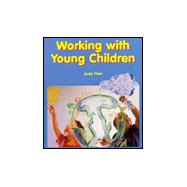Working with Young Children focuses on the application of child development principles to the care of children in group settings. Introduce your students to the fast-growing field of child care services, and help them learn the necessary skills. This popular text features an inviting, colorful format and up-to-date topics.
-- Topics include the CDA credential; guidance principles; water play, sand play, and blockbuilding experiences; new social studies topics; and more on-the-job application process.
-- Helps students develop effective skills for guiding children and for keeping them safe and healthy.
-- Provides instruction for setting up a developmentally-appropriate environment.
-- Covers planning and implementing curriculum that will meet children's needs and hold their interest.
-- Includes hundreds of full-color photos taken in actual child care settings.








